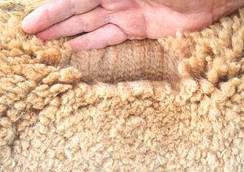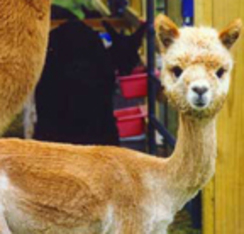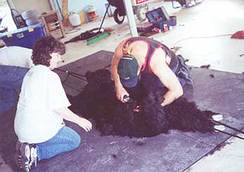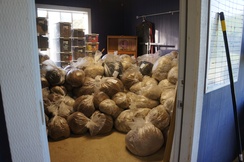
For many people looking for an alternative livestock to raise on land as small as one acre, alpacas are the answer. The scarcity of these animals along with demand for their luxurious fiber keeps the breeding and sales market of these beautiful animals strong. As the demand for alpaca grows, and South America realizes the value of their prized animals, the U.S. will likely become the next supplier of breeding stock to the world.
Alpacas are inexpensive to maintain, yet command premium prices, which makes them one of the world's finest livestock investments. The developing market for alpacas in North America, Europe, Australia, and New Zealand has been restricted by the scarcity of supply. Importation from South America, the native home to the alpaca, is risky and very expensive.
The tremendous worldwide demand for these charming animals and their fiber warrant their present value. Alpaca prices vary according to sex, conformation and fiber quality. A well-established alpaca registry carefully screens any potential imports. Alpacas are fully insurable. The potential profit and tax advantages available to alpaca breeders are important, as is the lifestyle of raising these curious creatures.
The alpaca industry in the United States and Canada is based on breeding. Most breeders are concentrating on breeding for the best fiber, consistent in fineness, uniformity, yield, and color. Since 95% of the world's alpaca fiber is white, there is a strong movement in the U. S. to maintain the genetics of colored alpacas.
The primary function of the alpaca is fiber production. Alpacas produce one of the world's finest, most luxurious and valuable fibers that exists today, soft as cashmere, warmer, lighter and stronger than wool.
Alpaca fiber has 16 natural, recognized colors, including true jet black, gray, brown, fawn, red, apricot, steel blue, pale silver and even a vibrant rose gray. The colors can be blended and the fiber is readily dyed, making it possible to obtain any color desired. Breeders take pride in their colorful herds with ever improving fiber quality. The scarcity of colored alpacas contributes to their value.
Alpaca Fiber vs. Sheep's Wool
Softness, tensile strength and variety of color set alpaca apart from other luxury fibers. Once used only by the Incan Royalty, alpaca fiber today is a popular material for the work of top Italian designers. At present handspinners pay $3.00 - $7.00 per ounce.
A very important characteristic of alpaca fiber is the handle or "feel". The pleasing softness felt when alpaca fiber is placed next to the skin can be attributed to a number of factors. The fineness of the fiber (lower micron count) contributes to the silky feel. Its hollow, insulating core gives alpaca fiber a cloud -weight softness.) Crimp is a measurement of the fiber's natural waviness.
Products created from alpaca fiber are comfortable to wear because of the lack of "prickle", due to the absence of guard hair. For this reason, garments made of alpaca are extremely lightweight, yet very warm.
Alpaca is easier and less expensive to process than sheep's wool due to its lack of lanolin (natural grease). It produces a higher yield of clean fiber after processing: 87 to 95 percent versus 43 to 76 percent for wool. Alpaca is lanolin-free and can be spun directly off of the animal. Sheep's wool requires cleaning prior to spinning. Hollow alpaca fiber has a higher thermal capacity (7 times warmer than sheep's wool) and is extremely light weight in comparison to sheep's wool.
Alpaca fiber has a natural, rich luster or sheen, with a silky feel. It blends well with wool, mohair and silk and dyes easily. Alpaca fiber is 3 to 6 inches in length, depending on the shearing method and schedule. The micron count ranges from 17 to 35, (Fiber with a diameter less 25 microns is considered fine) with the first clip from crias being prized for its fineness. Fleece weights range from 3 pounds for crias to 10 pounds for mature males.

Oriion's beautiful fleece: fine and dense. Look at that crimp!
|

Oriion, just after shearing.
|

Shearing day
|

2012 clip
|